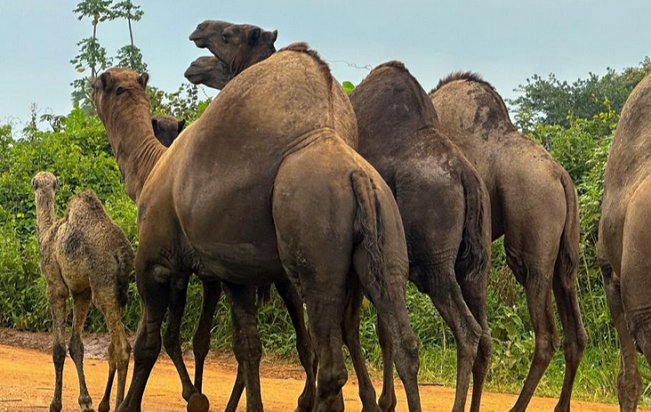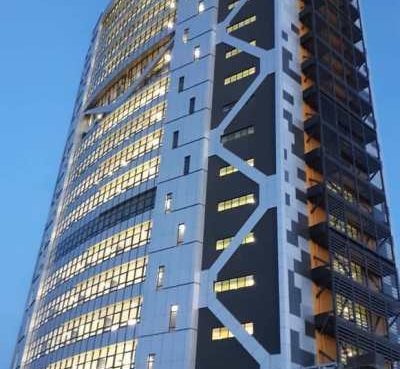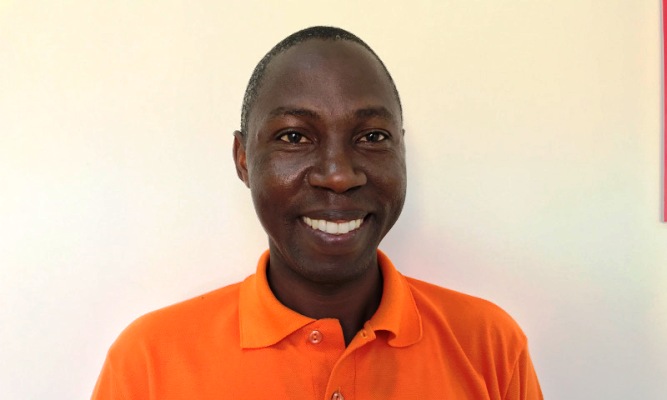A group of camels move along the Kayunga-Bbaale-Galiraaya road in August 2023.
The Ministry of Agriculture, Animal Industry and Fisheries (MAAIF) has introduced camel breeding inside the Aswa Ranch in Pader District.
The breeding project is being undertaken by the National Animal Genetic Resources Centre and Data Bank (NAGRC&DB), a semi-autonomous entity managing 32sq miles of the Aswa Ranch.
Uganda Radio Network understands that the camel breeding enterprise kicked off in May with a total of 55 pregnant camels supplied by breeders from Kenya and Uganda.
Gadson Tushabomwe, the Manager of Aswa Ranch under the NAGRC&DB Section confirmed the development to Uganda Radio Network in an interview Tuesday.
Tushabomwe says the government intends to multiply the camels in the next one and half years for milk production since its milk is highly nutritious, lactose-free, and has a ready market within East Africa and the Arab Countries.
According to Tushabomwe, while camels eat less and breed together with other livestock, a total of 5sq miles of land have so far been gazetted for the independent breeding of the camels.
The initiative has however sparked queries from some area local leaders who are demanding answers from the government on why the community hasn’t been sensitized about the move.
Dickson Ojok, the Angagura LCV Councilor says the ranch had initially been established to support farmers in improving cattle breeds and wondered why the government is now shifting to camels.
Ojok says the local leaders and the community surrounding the ranch haven’t been sat down by officials from NAGRC&DB on how they will benefit from the camel breeding program.
But Tushabomwe notes that the project is not only intended to benefit the locals arguing that the government also intends to generate income in terms of non-tax revenue from the breeding program.
He says the government already has cattle breeding and intends to introduce improved pig and goat breeds which will benefit locals interested in livestock other than camels.
“We are not only looking at the locals benefiting from each activity that happens there (In Aswa Ranch). The locals who will not benefit from camels will benefit from cattle breeding, from buying bulls and doing oxen ploughing because even when we say cattle breeding, not all people want to breed animals,” says Tushabomwe.
The introduction of camel breeding inside Aswa Ranch comes at a time when local leaders are tasking the government to explain the criteria used in selecting private entities to operate on the land whose ownership remains under contention.
At least three different private companies were allocated large chunks of land inside the ranch following a 2016 presidential directive. They include Banuti Ranchers Ltd which was allocated 10 sq miles of land and issued a lease offer of 50 years, ARPE Ltd, which acquired a 49-year lease and sits on 1.5 sq miles, and Gravity Investment Ltd which was offered 12 sq miles.
Martin Ojara Mapenduzi, the Bardege-Layibi Division Legislator also the Chairperson of the Public Service Committee says if the government intends to promote ranching in the sub-region, it shouldn’t sideline local private ranchers.
Ojara says there are still concerns that linger on the minds of the local leaders and community members on the nonvisible impact of the ranch and questions around its authentic boundary which should be solved by the government.
According to a report URN obtained from Mapenduzi, Aswa Ranch measures 105,400 acres and is under Uganda Livestock Industries (ULI). ULI reportedly took over the ranch from Acholi Ranching Co Ltd after the board members voluntarily liquidated the company in March 1968 slightly a year after its formation.
A total of 63,000 acres of the ranch lies in the Sub-counties Angagura, Laguti, and Ajan in Pader District while over 40,000 acres are located in Palabek Abera, Palabek Ogili, and Palabek Gem sub-counties in Lamwo. Aswa Ranch was popular for beef production, and veterinary training but collapsed around the 1980s.
In 2012, the government started revamping the ranch under NAGRC&DB which today owns more than 4,000 improved breeds of cattle on the ranch.
-URN





